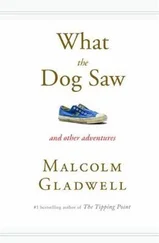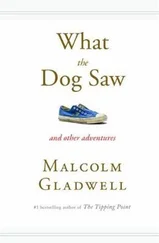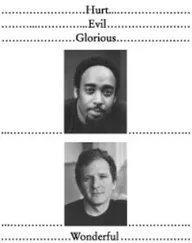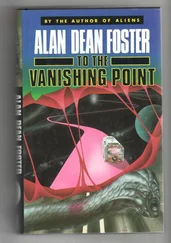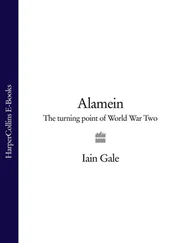Malcolm Gladwell - The Tipping Point
Здесь есть возможность читать онлайн «Malcolm Gladwell - The Tipping Point» весь текст электронной книги совершенно бесплатно (целиком полную версию без сокращений). В некоторых случаях можно слушать аудио, скачать через торрент в формате fb2 и присутствует краткое содержание. Город: Boston, New York, London, Год выпуска: 2000, ISBN: 2000, Издательство: LITTLE, BROWN AND COMPANY, Жанр: Культурология, Психология, на английском языке. Описание произведения, (предисловие) а так же отзывы посетителей доступны на портале библиотеки ЛибКат.
- Название:The Tipping Point
- Автор:
- Издательство:LITTLE, BROWN AND COMPANY
- Жанр:
- Год:2000
- Город:Boston, New York, London
- ISBN:0-316-31696-2
- Рейтинг книги:3 / 5. Голосов: 1
-
Избранное:Добавить в избранное
- Отзывы:
-
Ваша оценка:
- 60
- 1
- 2
- 3
- 4
- 5
The Tipping Point: краткое содержание, описание и аннотация
Предлагаем к чтению аннотацию, описание, краткое содержание или предисловие (зависит от того, что написал сам автор книги «The Tipping Point»). Если вы не нашли необходимую информацию о книге — напишите в комментариях, мы постараемся отыскать её.
The Tipping Point — читать онлайн бесплатно полную книгу (весь текст) целиком
Ниже представлен текст книги, разбитый по страницам. Система сохранения места последней прочитанной страницы, позволяет с удобством читать онлайн бесплатно книгу «The Tipping Point», без необходимости каждый раз заново искать на чём Вы остановились. Поставьте закладку, и сможете в любой момент перейти на страницу, на которой закончили чтение.
Интервал:
Закладка:
This is a sobering fact. But it also suggests that tobacco may have a critical vulnerability: if you can treat smokers for depression, you may be able to make their habit an awful lot easier to break. Sure enough, this turns out to be the case. In the mid-1980s, researchers at what is now the Glaxo Wellcome pharmaceutical firm were doing a big national trial of a new antidepressant called bupropion when, much to their surprise, they began getting reports about smoking from the field. "I started hearing that patients were saying things like, 'I no longer have the desire to smoke,' or 'I've cut down on the number of cigarettes I'm smoking,' or 'Cigarettes don't taste as good anymore,"' said Andrew Johnston, who heads the psychiatry division for the company. "You can imagine that someone in my position gets reports about everything, so I didn't put much stock in them. But I kept getting them. It was very unusual." This was in 1986, before the depression — smoking link was well understood, so the company was initially puzzled. But what they soon realized was that bupropion was functioning as a kind of nicotine substitute. "The dopamine that nicotine releases goes to the prefrontal cortex of the brain," explains Johnston. "That's the pleasure center of the brain. It's what people believe is responsible for the pleasure, the sense of wellbeing, associated with smoking, and that's one of the reasons it's so hard to quit. Nicotine also increases norepinephrine, and that's the reason that when you try to quit smoking and you no longer get so much norepinephrine, you get agitation and irritability. Bupropion does two things. It increases your dopamine, so smokers don't have the desire to smoke, then it replaces some of the norepinephrine, so they don't have the agitation, the withdrawal symptoms."
Glaxo Wellcome has tested the drug — now marketed under the name Zyban — in heavily addicted smokers (more than 15 cigarettes a day) and found remarkable effects. In the study, 23 percent of smokers given a course of anti-smoking counseling and a placebo quit after four weeks. Of those given counseling and the nicotine patch, 36 percent had quit after four weeks. The same figure for Zyban, though, was 49 percent, and of those heavily addicted smokers given both Zyban and the patch, 58 percent had quit after a month. Interestingly, Zoloft and Prozac — the serotonin drugs — don't seem to help smokers to quit. It's not enough to lift mood, in other words; you have to lift mood in precisely the same way that nicotine does, and only Zyban does that. This is not to say that it is a perfect drug. As with all smoking cessation aids, it has the least success with the heaviest smokers. But what the drug's initial success has proven is that it is possible to find a sticky Tipping Point with smoking: that by zeroing in on depression, you can exploit a critical vulnerability in the addiction process.
There is a second potential Tipping Point on the stickiness question that becomes apparent if you go back and look again at what happens to teens when they start smoking. In the beginning, when teens first experiment with cigarettes, they are all chippers. They smoke only occasionally. Most of those teens soon quit and never smoke again. A few continue to chip for many years afterward, without becoming addicted. About a third end up as regular smokers. What's interesting about this period, however, is that it takes about three years for the teens in that last group to go from casual to regular smoking — roughly from fifteen to eighteen years of age — and then for the next five to seven years there is a gradual escalation of their habit. "When someone in high school is smoking on a regular basis, he or she isn't smoking a pack a day," Neal Benowiu, an addiction expert at the University of California at San Francisco, says. "It takes until their twenties to get to that level."
Nicotine addiction, then, is far from an instant development. It takes time for most people to get hooked on cigarettes, and just because teens are smoking at fifteen doesn't mean that they will inevitably become addicted. You've got about three years to stop them. The second, even more intriguing implication of this, is that nicotine addiction isn't a linear phenomenon. It's not that if you need one cigarette a day you are a little bit addicted, and if you need two cigarettes a day you are a little bit more addicted, and if you need ten cigarettes you are ten times as addicted as when you needed one cigarette. It suggests, instead, that there is an addiction Tipping Point, a threshold — that if you smoke below a certain number of cigarettes you aren't addicted at all, but once you go above that magic number you suddenly are. This is another, more complete way of making sense of chippers: they are people who simply never smoke enough to hit that addiction threshold. A hardened smoker, on the other hand, is someone who, at some point, crosses that line.
What is the addiction threshold? Well, no one believes that it is exactly the same for all people. But Benowitz and Jack Henningfield — who are probably the leading nicotine experts in the world — have made some educated guesses. Chippers, they point out, are people who are capable of smoking up to five cigarettes a day without getting addicted. That suggests that the amount of nicotine found in five cigarettes — which works out to somewhere between four and six milligrams of nicotine — is probably somewhere close to the addiction threshold. What Henningfield and Benowitz suggest, then, is that tobacco companies be required to lower the level of nicotine so that even the heaviest smokers — those smoking, say, 30 cigarettes a day — could not get anything more than five milligrams of nicotine within a 24-hour period. That level, the two argued in an editorial in the prestigious New England Journal of Medicine , "should be adequate to prevent or limit the development of addiction in most young people. At the same time it may provide enough nicotine for taste and sensory stimulation."' Teens, in other words, would continue to experiment with cigarettes for all the reasons that they have ever experimented with cigarettes — because the habit is contagious, because cool kids are smoking, because they want to fit in. But, because of the reduction of nicotine levels below the addiction threshold, the habit would no longer be sticky. Cigarette smoking would be less like the flu and more like the common cold: easily caught but easily defeated.
It is important to put these two stickiness factors in perspective. The anti-smoking movement has focused, so far, on raising cigarette prices, curtailing cigarette advertising, running public health messages on radio and television, limiting access of cigarettes to minors, and drilling anti-tobacco messages into schoolchildren, and in the period that this broad, seemingly comprehensive, ambitious campaign has been waged, teenage smoking has skyrocketed. We've been obsessed with changing attitudes toward tobacco on a mass scale, but we haven't managed to reach the groups whose attitude needs to change the most. We've been obsessed with foiling the influence of smoking Salesmen. But the influence of those Salesmen increasingly looks like something we cannot break. We have, in short, somehow become convinced that we need to tackle the whole problem, all at once. But the truth is that we don't. We only need to find the stickiness Tipping Points, and those are the links to depression and the nicotine threshold.
The second lesson of the stickiness strategy is that it permits a more reasonable approach to teenage experimentation. The absolutist approach to fighting drugs proceeds on the premise that experimentation equals addiction. We don't want our children ever to be exposed to heroin or pot or cocaine because we think that the lure of these substances is so strong that even the smallest exposure will be all it takes. But do you know what the experimentation statistics are for illegal drugs? In the 1996 Household Survey on Drug Abuse, 1.1 percent of those polled said that they had used heroin at least once. But only 18 percent of that 1.1 percent had used it in the past year, and only 9 percent had used it in the past month. That is not the profile of a particularly sticky drug. The figures for cocaine are even more striking. Of those who have ever tried cocaine, less than one percent — 0.9 percent — are regular users. What these figures tell us is that experimentation and actual hard-core use are two entirely separate things — that for a drug to be contagious does not automatically mean that it is also sticky. In fact, the sheer number of people who appear to have tried cocaine at least once should tell us that the urge among teens to try something dangerous is pretty nearly universal. This is what teens do. This is how they learn about the world, and most of the time — in 99.1 percent of the cases with cocaine — that experimentation doesn't result in anything bad happening. We have to stop fighting this kind of experimentation. We have to accept it and even to embrace it. Teens are always going to be fascinated by people like Maggie the au pair and Billy G. and Pam P., and they should be fascinated by people like that, if only to get past the adolescent fantasy that to be rebellious and truculent and irresponsible is a good way to spend your life. What we should be doing instead of fighting experimentation is making sure that experimentation doesn't have serious consequences.
Читать дальшеИнтервал:
Закладка:
Похожие книги на «The Tipping Point»
Представляем Вашему вниманию похожие книги на «The Tipping Point» списком для выбора. Мы отобрали схожую по названию и смыслу литературу в надежде предоставить читателям больше вариантов отыскать новые, интересные, ещё непрочитанные произведения.
Обсуждение, отзывы о книге «The Tipping Point» и просто собственные мнения читателей. Оставьте ваши комментарии, напишите, что Вы думаете о произведении, его смысле или главных героях. Укажите что конкретно понравилось, а что нет, и почему Вы так считаете.



